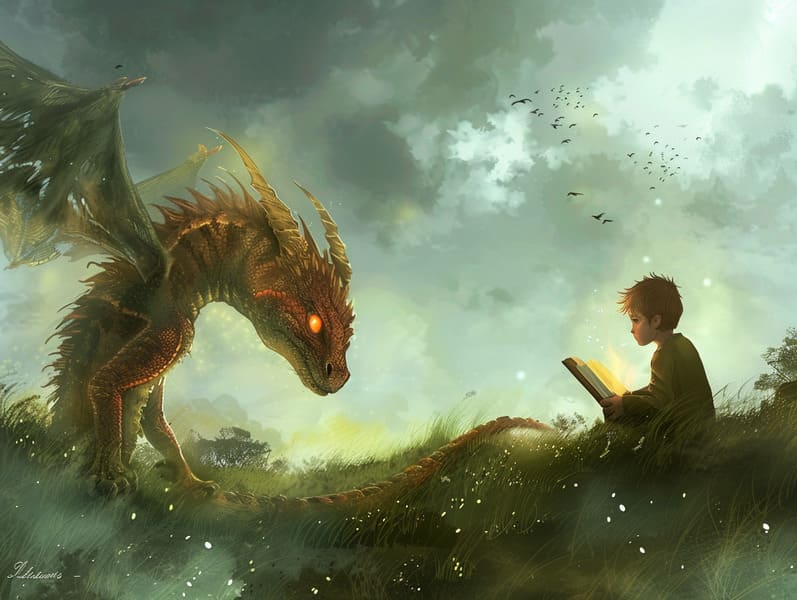Exploring the Roots of Timeless Fairy Tales and the Consistent Splendor.
Exploring the Roots of Timeless Fairy Tales and the Consistent Splendor.
Blog Article

Best fairy tales have timeless appeal. These stories have been spoken from one generation to the next far before they were ever published. They developed from a variety of civilizations, including Eastern traditions. They were initially shared among mature audiences, often carrying themes and messages concerning the societal norms and beliefs of the time.
The Grimm brothers, Jacob and Wilhelm (the Grimm brothers), were among the first to assemble many of these beloved stories. Their volume, "Grimm's Folk Tales," included tales like "The Story of Cinderella," "Little Brother and Little Sister," and "The True Story of Snow White," which have since become pillars in the world of traditional fairy tales. Similarly, Hans Andersen's imaginative stories, such as "The Mermaid's Tale," and "The Little Duckling," have floated into hearts worldwide, establishing their place in the pantheon of classic fairy tales.
Despite their historical roots, classic fairy tales remain as impactful as ever, especially as children's night stories. These whimsical stories are now available in diverse formats, including gorgeously illustrated books, magical animations, and online fairy tales.
Their persistent charm can be ascribed to several delightful features:
Life Lessons: Classic fairy tales often offer important moral lessons. Narratives like "The Wolf and the Liar" teach the merit of integrity, while "The Story of the Tortoise and the Hare" exemplify the values of perseverance and unpretentiousness. These stories offer children clear distinctions between right and wrong, guiding their moral compass in a kind yet important way.
Compassion and Insight: Old fairy tales frequently illustrate protagonists facing tests and troubles, encouraging young listeners to empathize with their struggles and rally behind their triumphs. For instance, "The Story of Beauty and the Beast" conveys the necessity of looking past the exterior to acknowledge the real person of a individual, cultivating sympathy and recognition.
Cultural Insights: Many timeless fairy tales are deeply ingrained in the cultural contexts from which they originated. Delving into these stories can provide captivating looks into different societies, building a sense of world respect and acknowledgment.
Creativity and Imagination: The enchanted elements in ancient fairy tales—talking beasts—promote children’s creative dreams. These tales move readers to magical realms, revitalizing inventive thinking and a sense of magic that remains a lifetime.
Old fairy tales are not only bewitching but also edifying. They act as bewitching tools in promoting various mental and emotional abilities in children. When fairy tales are recited, they improve communication skills by showing new lexicon and sophisticated sentence structures. This practice also cultivates hearing perception and attentiveness, as young readers follow the story, eager to see what happens next.
Furthermore, reflecting on the themes and characters of classic fairy tales can enhance thought processes and problem-solving abilities. Little ones learn to find patterns, forecast, and figure out cause and effect. These talks also aid kids speak out their thoughts and feelings, enhancing their emotional intelligence.
In today’s modern era, the prevalence of online fairy tales has made these tales more accessible than ever. Digital sites and digital apps make available ample collections of bedtime fairy tales that can be explored or played anytime, anywhere. Fairy tales told out loud are particularly popular, presenting this site an enjoyable way for children to engage with these alluring stories. Read-aloud books and read-aloud videos transport characters and settings to life, often supplemented by mesmerizing audio effects and musical scores that amplify the narrative journey.
The timeless allure of old fairy tales lies in their ability to evolve to new eras while staying true to their essential themes. Contemporary versions of these fairy tales often integrate more inclusive characters and modern settings, making them understandable to today’s audience. However, the fundamental themes of braveness, charity, and integrity remain unchanged, continuing to resonate with young listeners of all ages.
Old fairy tales also offer a sense of solace and homeliness. They supply a organized narrative with a clear beginning, middle, and end, often closing with the termination of conflicts and the triumph of goodness over badness. This constancy can be easing for kids, bringing a sense of consistency in an fluctuating world.
Classic fairy tales continue to spellbind and teach new generations, maintaining their spell and relevance in modern society. As children's bedtime stories, they extend a perfect blend of fascination and comprehension, promoting moral values, empathy, and creativity. The proliferation of web-based fairy tales and the sought after status of fairy tales voiced promise that these ancient tales remain reachable to new generations.
By defending and telling these tales, we continue to revere the rich tapestry of folklore and cultural heritage. Whether you are enjoying a artistically illustrated book, perusing a virtual library, or playing an read-aloud book, the allure of classic fairy tales is always within reach. These narratives illustrate of the steadfast power of narratives and its ability to bond us across time and space.
Whether you are accessing a beautifully illustrated book, seeing a electronic library, or listening via an spoken story, the delight of classic fairy tales is always within reach.
These fairy tales point out of the ageless essence of fairy tales and its ability to link us across eras and regions, establishing a link that charms and informs alike.